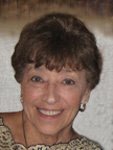1. Why are you writing this book?
- To reflect on my life as a writer which began with little more than a vague goal—to write—and developed into a successful career as a feature writer, editor, corporate communicator, author, and book coach
- To show aspiring writers that if they really want to make writing their life’s work, with a little talent and a lot of determination, they can achieve any goal they set for themselves
- To illustrate the process outlined in my previous book, How to Write a Nonfiction Book; From Concept to Completion in 6 Months by planning and writing a book on my blog.
This book is a memoir of my life as a writer—40 years of learning, growing, and reinventing myself to meet the changing needs of the marketplace.
3. How are you qualified to write this book?
I am an editor, ghostwriter, teacher, writing coach, and the author of 14 books, including How to Write a Nonfiction Book: From Concept to Completion in 6 Months, Going Solo: How To Survive & Thrive as a Freelance Writer, and The Invisible Author: Confessions of a Ghostwriter.
4. Why is this an appropriate and timely topic? Why this book, now?
5. Who are your target readers?
Someone asked me years ago what I wanted to do and my answer was help writers write. The answer hasn’t changed. My target audience comprises writers, no matter where they are in their careers —learning, aspiring, working, or succeeding. This is not a book aimed particularly at women, but it is one woman’s story of what it takes to “make it” before, during, and after the women’s movement.
6. How will they benefit? Why should they read it? What will they learn?
This is a writer’s chronicle of a career that began modestly and developed in ways the author could never have predicted. The lessons the book teaches through its reminiscences and humor include the following:
- If you know what you want to do, don’t let anything or anyone stop you from doing it.
- With a little talent and a lot of moxie, you can be whatever you choose to be.
- Set attainable goals that stretch you; as you achieve each one, set another one immediately.
- Writing is not a competitive sport; don’t be threatened by other people’s success
- Seek mentors; then become one.
- Be generous with your talent; remember that it’s a gift; pass it on.
- Know what your values are; let your writing reflect them.
- Don’t lose your sense of humor.
- Ask yourself from time to time if there is something else you would rather do; if you can’t think of anything, keep writing.
8. How big is the market? How many potential readers are there?
- Writers magazines (Total circulation: 166,460)
- Articles on writing at the major online article websites
- Writers blogs
- Women's magazines (Total circulation: 30,510,960 )
- Social networking sites (Facebook, LinkedIn [WritersWorld], Twitter, Gather)
- Six autobiographies by Maya Angelou
- The Well-Fed Writer by Peter Bowerman
- The Well-Fed Writer: Back For Seconds by Peter Bowerman
- A Dangerous Profession: A Book About the Writing Life by Frederick Busch
- The Writing Life by Annie Dillard
- Memoirs of a Delta Favorite by Ellen Gilchrist
- The Writing Life by Ellen Gilchrest
- The Long Quiet Highway by Natalie Goldberg
- Old Friend From Far Away by Natalie Goldberg
- Writing Down the Bones by Natalie Goldberg
- Wounds of Passion: A Writing Life by Bell Hooks
- On Writing by Stephen King
- Bird By Bird by Annie Lamott
- Writing About Your Life: a Journey Into the Past by William Zinsser
10. How will you help to promote your book?
- Dedicated website (www.WriteANonfictionBook.com
- Online articles (ezinearticles.com, http://searchwarp.com, http://Top7Business.com/, http://www.amazines.com/, http://www.articlecity.com, and others)
- Social networking sites (Facebook, LinkedIn [WritersWorld], Twitter, Gather)
- Articles in writers' magazines (The Writer, Writers' Digest, Writers' Journal)
- The Writing Life blog
- News & Views (monthly newsletter)
- Presentations on all aspects of nonfiction writing
- Writers blogs (request link exchange or guest blogging opportunity on copyblogger.com, writetodone.com, mashable.com, problogger.com, etc.)









